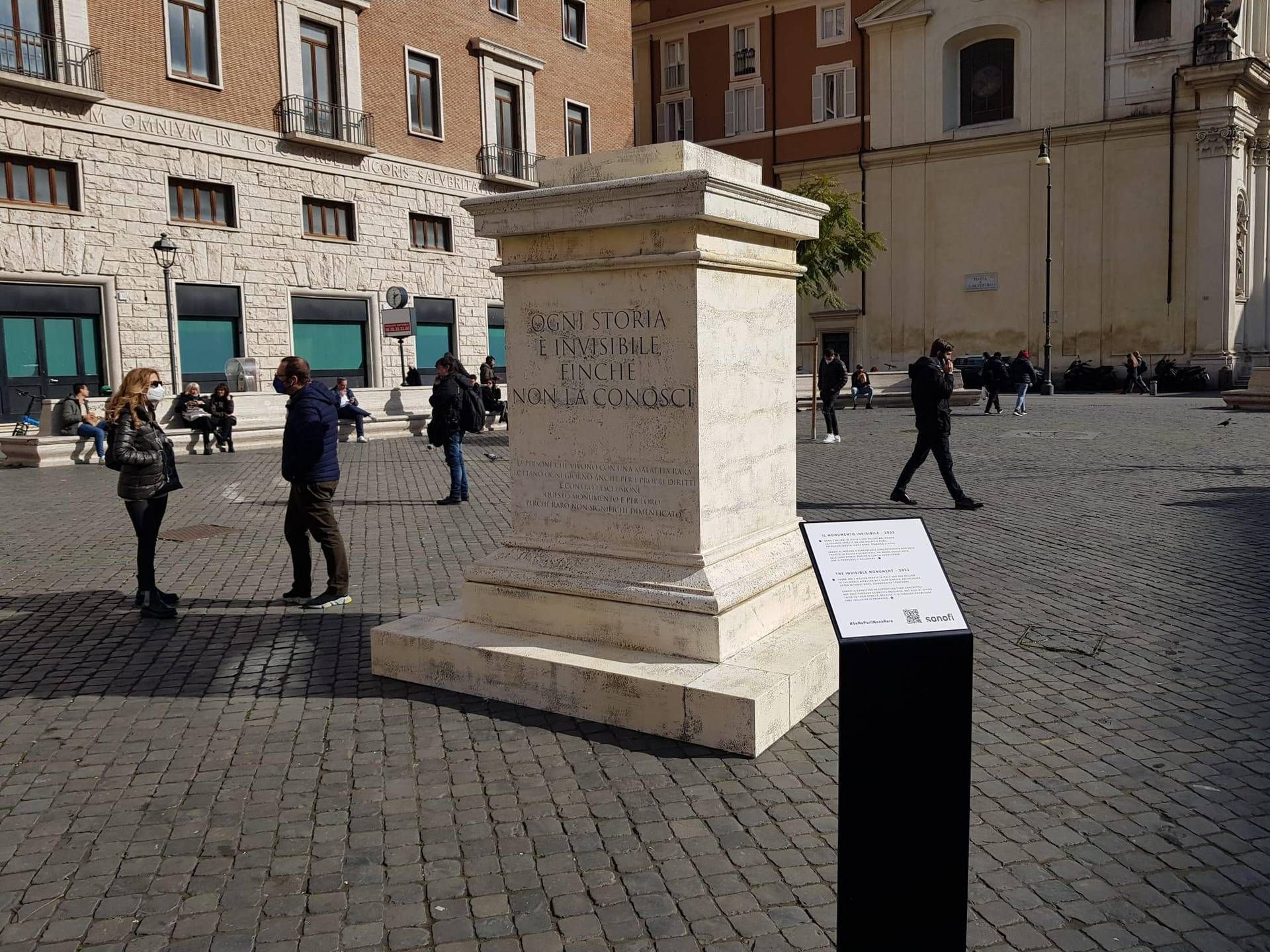A marble base, like thousands of them in Rome, but without any sculpture: it is the ‘invisible monument’, installed from 28 February to 2 March in Rome, in Piazza di S. Silvestro, a few steps from Palazzo Montecitorio and Palazzo Chigi, on the occasion of the 15th World Day of Rare Diseases. A temporary installation with a strong symbolic value with which Sanofi “wants to continue to bring attention to the millions of people (over 2 million in Italy and 300 million in the world) who have a pathology that can sometimes make them feel invisible because it affects only a few. individuals. But this does not mean that the rare patients must have less dignity and rights or be induced to hide their illness for fear of discrimination, social isolation or stigmatization “.
From these considerations the idea of the Monument was born, “iThe first step of a new campaign called ‘(In) Visible Stories’ which will last all year and which will give voice to some of the rare disease stories. Objective: to raise awareness of rare diseases and draw attention to the difficulties and challenges still open for those affected and their families, in the belief that knowledge stimulates ever greater inclusion “, informs the company.
“For over 35 years Sanofi has concretely supported people with rare diseases, their caregivers and the associations that represent them – underlines Marcello Cattani, president and CEO of Sanofi Italy – both with the development of innovative therapies and through information campaigns and offering patient support services. Since 2021 we have started a new awareness-raising process that starts from the assumption that greater knowledge stimulates understanding and, therefore, greater social inclusion for people with rare diseases. done by promoting the knowledge of words unknown to most and linked to the world of those living with a rare disease; this year we will do it by bringing to light the many stories of courage and resilience of the rare patients. Because rare should never mean invisible. commit ourselves to this and to their other rights, supporting the activities of the associations that represent them and putting them at the service I start our activities and our means of communication, to make the echo of this message resound well beyond World Day “.
Crucial is early diagnosis, which remains a major problem for people with rare disease. In the case of hereditary metabolic diseases called lysosomal storage diseases, a timely diagnosis can radically change the natural history of the disease and the very life of the patient and their family.
“Hereditary metabolic diseases – explains Andrea Pession, president of Simmesn, Italian Society for the study of hereditary metabolic diseases and newborn screening – are pathologies of genetic origin which occur in most cases in the very first years of life and which, if untreated, they lead to progressive and irreversible damage to various organs and systems. This is why it is essential to identify them quickly and start therapy early. Unfortunately, however, some of these pathologies, in particular lysosomal diseases, are not yet included in the national extended neonatal screening panel , an essential tool for diagnosing serious and progressive diseases that endanger the lives of children at birth, by simply taking a drop of blood “.
Of different origins and epidemiology, but with similar problems, are some rare blood diseases, such as acquired thrombotic thrombocytopenic purpura, an autoimmune coagulation disease also known as Moschcowitz syndrome, which manifests itself with acute and unpredictable events affecting vital organs (heart, brain, kidneys) which make it potentially fatal. Precisely because of its characteristics, an accurate and immediate diagnosis after the acute event is essential to set up a correct and timely therapy and avoid the most serious consequences.
“Attp is an unpredictable and acute pathology, with an extremely high mortality risk, which can reach up to 90% following an acute untreated episode, which makes it necessary to intervene in extreme urgency, even if it is often not easy. – says Luana Fianchi, medical director of the Department of Diagnostic Imaging, Oncological Radiotherapy and Hematology at the UOC of Geriatric Hematology and Rare Hemopathies of the Irccs Gemelli University Hospital Foundation in Rome – The knowledge of the pathology is fundamental in order to correctly identify the signs and symptoms , and have laboratories equipped for diagnostic confirmation through platelet count and measurement of the levels of the Adamts13 enzyme. Recent guidelines specify that the dosage of Adamts13 is a fundamental test both to be able to intervene on the pathology in the acute phase, and for the subsequent monitoring as prevention of relapses To date, the test is not yet included in the essential levels assistance – he highlights – with consequent territorial disparities in patients’ access to timely diagnosis and treatment “.
